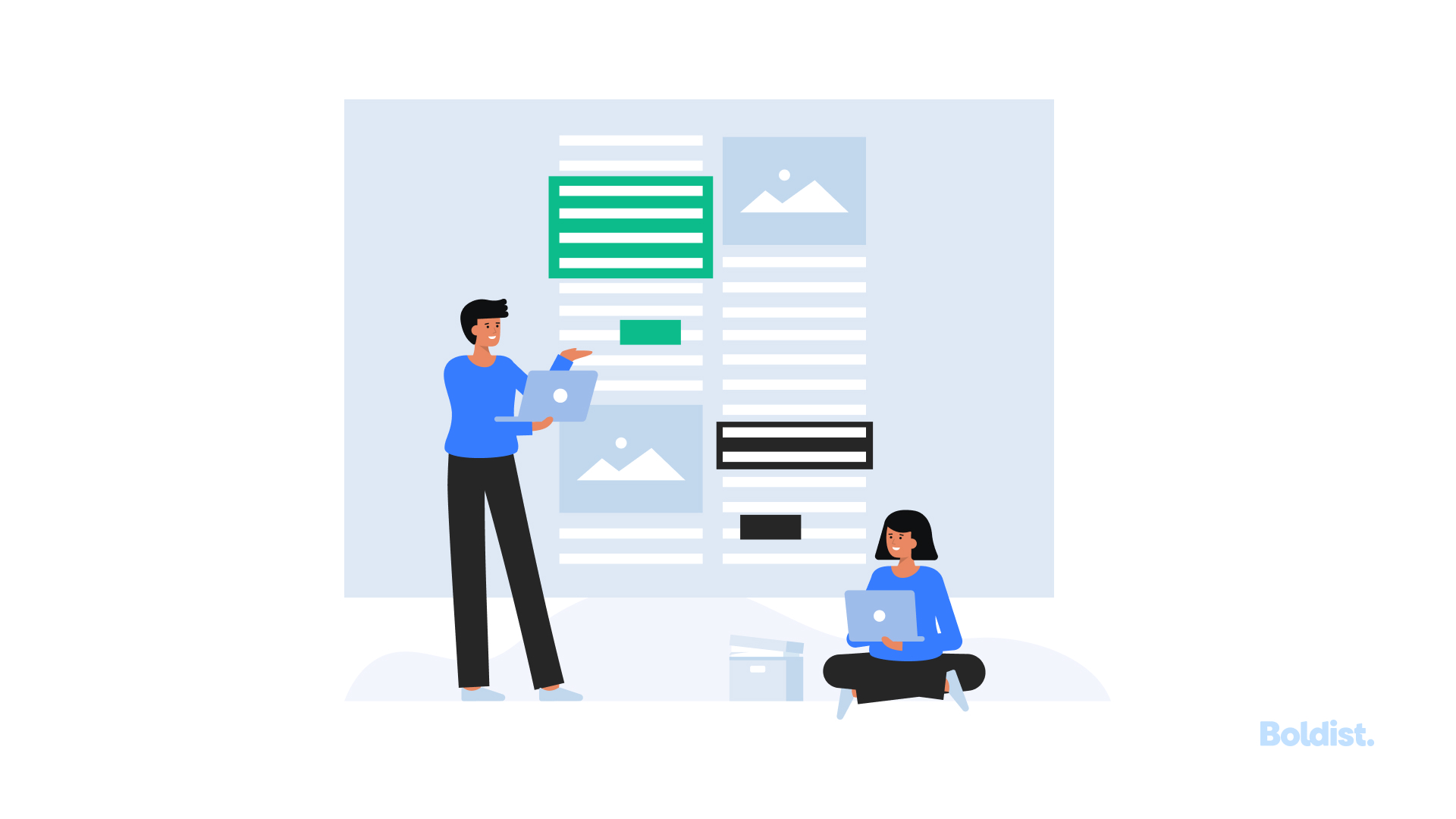Every good marketer and their grandma knows that it’s important to post consistently. From blogs to social media, it’s all about staying relevant. The cliche “content is king” is true, overused or not. And that doesn’t change the fact that keeping up isn’t as easy as it sounds – not when you have a business to run.
On top of that, when maintaining your website, you need to do more than post consistently. You have to keep your website content fresh. It’s not just creating new, original content but bringing your old content up to speed.
No matter how desperately you want to move on from a piece after posting it or want to generate loads of content without a long-term strategy, you know you can’t. Or you can, but it will waste all your efforts.
The Undeniable Importance of Fresh Website Content
Content plays a key role in what makes a great website. For one, it’s what informs search engines, including the all-knowing Google, that your website is alive and active. Posting new content and updating your old content is how they know what you have to offer is relevant and worth sharing in search results. Google specifically looks at a set of factors for your website content to measure its freshness including date created, last time you made an update, the size of updates and how often it’s updated overall.
Outside of search engine optimization, fresh content is what builds your business’s credibility. If a lead visits your website and sees noticeably outdated or inaccurate information, they’re going to leave, and your bounce rate will skyrocket.
Posting consistently and staying up to date encourages repeat visits and grows brand loyalty as your website becomes a trusted source for new information. With it, you gain higher conversion rates.
Signs That Your Content Is Outdated
If you’re worried about the state of your website, look out for these signs that it’s in desperate need of freshening:
- You haven’t added new content in a month
- Your site navigation isn’t intuitive
- You can’t recall when you last updated the homepage
- It’s not mobile optimized or responsive
- It’s not on-brand
- Your images are outdated
- It’s not contributing to lead development
- Your web traffic is stagnant or declining
- The tone or message is inconsistent
- There’s old or inaccurate information anywhere
- You’re still using broken links
- The footer copyright date isn’t the current year
- Your listed new products/events aren’t new anymore
- The web pages are slow to load
If any of these describe your content, don’t fear. The following tips will help you turn your website around for the better.

How to Maintain Your Website Content
Knowing that you need to keep your content fresh is great and all, but how do you actually do it? You want to make sure that you’re doing it right and keeping up with it for the best results. Let’s get into it.
Update Older Posts and Pages
Just because your older posts are from months or years back, doesn’t mean someone won’t stumble across it and see your outdated information, ruining your authority and trustworthiness as a source. Updating your posts will also signal to search engines that the information it holds is still relevant to searchers.
So when should you update an old post or web page? Anytime you find new information on the topic discussed, add it. This is especially important if the information isn’t just additional, but factually different and yours is no longer accurate. You’ll also want to keep an eye out for updated statistics, dates, events and more. Even jokes can become outdated. Signs of a prehistoric page to keep track of include:
- Person information
- Timelines, dates and events
- Statistics
- Pop culture references
- Outdated jokes
- Non Inclusive language
- Old or broken links
If you end up with a lot of updating to do and are feeling overwhelmed, prioritize the pages that bring in the most traffic first.
Let Go of Those Outdated Posts
Sometimes an old post requires more fixin’ than a few edits or additional paragraphs can provide. Sometimes the topic itself is no longer relevant or never was a good fit for your target audience. This might be the case when a web page isn’t bringing in traffic or contributing to your goals.
When this occurs, when it’s hurting your performance more than it’s helping, it’s time to remove the content from your website. It’s difficult when you invested your time and effort into the content, but it’s what you have to do.
If the post contributes high-quality backlinks, you can try recycling it instead to prevent those losses, but you’ll want to treat it like a rewrite to ensure you’re creating new, valuable content.
Combine Similar Content
After you’ve been creating content for a while, some of those pieces are bound to look alike. You may have covered some topics more than once, whether on accident or on purpose. A common search engine optimization mistake is to think that more is always better. Some businesses choose a couple of keywords to target throughout their entire website.
This is dangerous.
It results in keyword cannibalization – a process where your own webpages are competing with each other, ultimately hurting the SEO of both. To prevent keyword cannibalization from damaging your search rankings, you should target different keywords on each page or blog post.
If you do have separate pages that are ranking for the same words or have the same content, keep your content fresh by merging them together. Choose the best performing one, and take any of the additional information provided by the others and move it to that one.
Revamp Your Keyword Strategy
Popular keywords, search intent and trends are always changing, and you want to continue to reassess and improve your keyword strategy for success when maintaining your content.
Start by analyzing whether your intended keywords for a web page are working, and if they’re not, change it up. You should also check which keywords are bringing in traffic as it may surprise you. If there are ones that do, use them to inspire new content ideas and add them for improved rankings.
These practices will boost your SEO as search engines will pick up these changes and recognize your site as one of the living – not the living dead.
Create a Website Content Calendar
Similar to a social media calendar, you should create a content schedule for your website to help you stay consistent, on track, relevant and focused. Your calendar can include notes for when to update old content or do an analysis for any old or mergeable posts.
Content calendars also encourage brainstorming ideas and topics in advance, which can help you with writer’s block down the road. Even once you create a calendar, keep a space where you can jot down topic ideas that come to mind over time.
Stay Informed on News in Your Industry
Speaking of writer’s block, industry or worldly happenings can give you direction for fresh and relevant content ideas, especially if you’re positioned as an expert or service provider. Staying up to date with the news and implementing it into your strategy in a timely fashion will magnify your credibility. If you act quickly, you may find that it’s easier to rank for content that’s not yet been covered by hundreds of sources.
Staying informed is also good practice for your own knowledge and managing your business, offerings and website pages in general. Write about industry specific topics for your own personal development as well as part of your business blogging strategy.
Keep Up With More Than Your Blog
While blogging has tried to take over the content scene, all of your website pages are important contributors to your SEO and customer experience. Each page, from product pages to FAQs, can hold outdated information. Your products may stay the same, but the way they’re viewed or the context in which they’re used can change. Even your about page may contain information that should be updated to boost your credibility, like the number of years you’ve been in business.
So make sure that you apply the tips in this post for all of your website content and not just your blog.
Unbury Your Content With Fresh Links
With the passing of time, older posts and pages may sink down the search results page and bring in less traffic as they get buried under more recent items. You can help extend the shelf life of great content by linking to it from other pages or earning backlinks from other sites. When you create a new piece of content, always look for old pages to link to and show how they’re still relevant.
Touch Up Your Web Design
Content isn’t all copy. Web design works hand-in-hand with readable content to complete the user experience, and updating your web design is just as important for freshness and SEO.
Before all else, it’s essential to ensure that your website is functioning with modern times and expectations. This includes responsiveness and mobile optimization. Once your website works well enough to do its job seamlessly, you should make sure that it makes a good impression as 75% of people judge credibility based on web design.
If you want a successful website that doesn’t just function but also converts visitors and looks good while doing it, then your best bet is to hire a web design agency.
Update Your Imagery
Whether you’ve undergone a full rebrand or have finetuned your look or message over the years, the imagery on your website should reflect that. More than just looking better, it’s a matter of brand consistency that makes you memorable to the user.
Stick With the Times (and the Law)
As society advances and the internet takes an ever-expanding role in our lives, there are new expectations that great content has to meet. From a progressive standpoint, your language should always be inclusive and you should edit old posts if they’re not.
In some cases, despite the internet functioning as an essentially free space, there are even laws and guidelines regarding the content posted online. The Americans with Disabilities Act (ADA), for example, requires certain business websites to be accessible to those with disabilities. Whether your business falls in that category or not, it’s a good idea to make your website ADA compliant and available to all.
To avoid tangling with the law or heavy backlash from the public, be sure to keep your content up to date with growing expectations.
Don’t Waste Your Website Content
As time-consuming as it is, if you want the hours that you’ve dedicated to your website content to accomplish anything, then a strategy for content upkeep is a must. When you make an effort to keep your content fresh, you’ll find that each piece contributes more to your short and long term success with SEO, audience growth and conversion.


